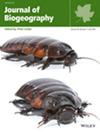Many tree species may be threatened with declines in range and biomass, or even extinction, if they cannot disperse or adapt quickly enough to keep pace with climate change. One potential, and potentially risky, strategy to mitigate this threat is assisted migration (AM), the intentional movement of species to facilitate population range shifts to more climatically suitable locations under climate change. The ability for AM to minimise risk and maximise conservation and forestry outcomes depends on a multi-faceted decision process for determining, what, where and how much to move. We provide an assessment on how the benefits and risks of AM could affect the decision-making process.
Mountainous coastal western United States.
Trees.
We used a dynamic vegetation model parameterised with 23 tree species.
We found that most of the modelled species are likely to experience a substantial decline in biomass, with many potentially facing regional extinction by 2100 under the high-emission SSP5-85 climate-change scenario. Though simulations show AM had little effect on the forestry goal of total biomass across all species, its effects on the conservation goal of promoting individual species' persistence were far more substantial. Among eight AM strategies (differing in the life cycle stage of movement and target destination selection criteria), the approach that conserved the highest biomass for individual species involved relocating target seedlings to areas that recently experienced fire. Although this strategy significantly reduced extinction risk for six at-risk species compared with no action, it also slightly reduced biomass of four species, due to increasing competition. Species with relatively weak tolerance to drought, fire or high temperature were the most likely candidate groups for AM.
Our simulations indicate that AM can aid conservation by reducing extinction risks for species vulnerable to climate change, but it has limited impact on forestry-specific goals, affecting overall biomass minimally. This model framework could be applied to other forest ecosystems to evaluate the efficacy of AM globally.


